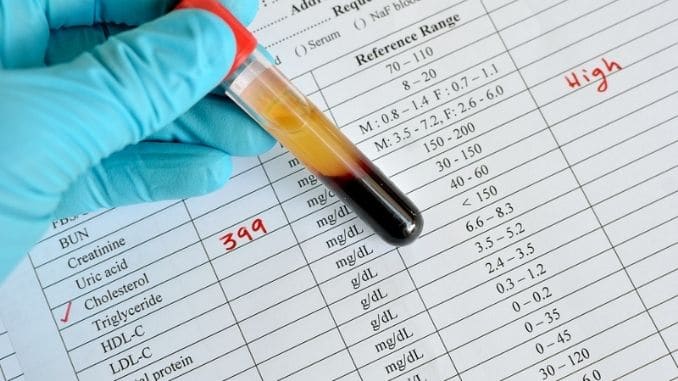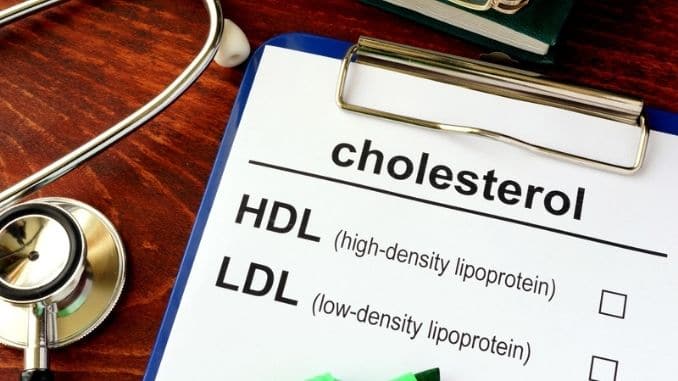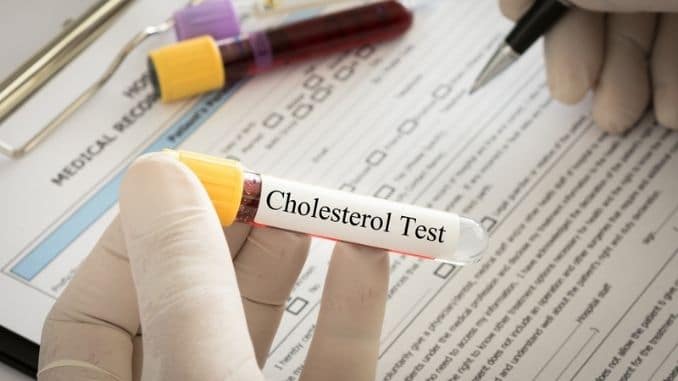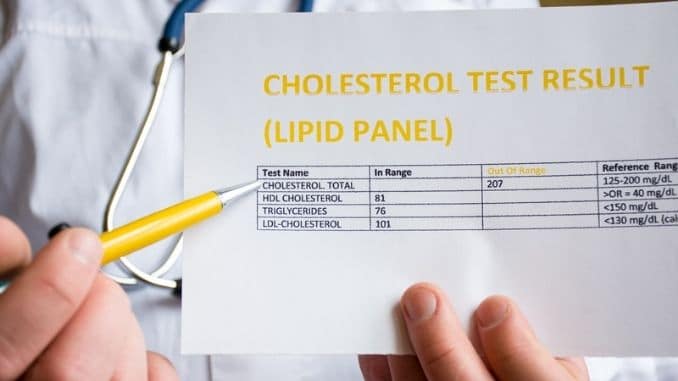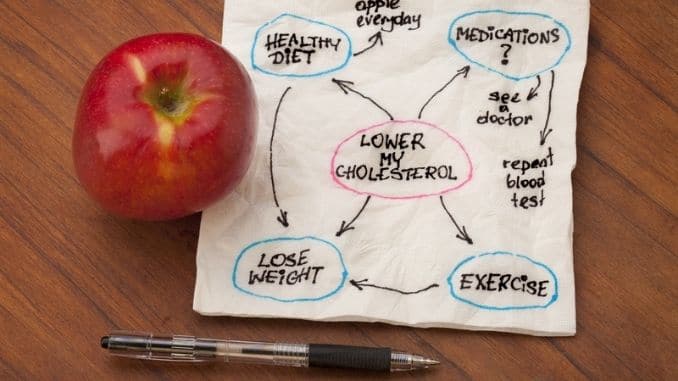Last week, you got a wellness check with your doctor, which included a blood test. Now you're looking at your lab results. The total cholesterol number is in red because it's “high” according to the readout.
Uh-oh. What does that mean?
But wait. Your “HDL cholesterol” is in the normal range, as is your LDL cholesterol. And your doctor says you’re fine—no need for medication.
Confused yet?
A lot of people are. In fact, cholesterol tends to confuse even scientists. In this article, we’ll do our best to clear it up a little so that you can make the most informed choices for your health.
What is Cholesterol?
Cholesterol is a waxy, fat-like substance (also called a lipid) that's found in all the cells of the body. And though we've been taught to worry about having too much, we need to have at least some to make hormones, vitamin D, and substances that help digest foods.
In other words, the body requires a certain amount of cholesterol to function normally. It does just fine creating what it needs all by itself. The liver makes it.
But we also get cholesterol from the foods we eat. The concern is that if we get too much—added to what we make ourselves—we could end up with a problem.
What Are the Dangers of Too Much Cholesterol?
Scientists believe that if you have too much cholesterol floating around in your bloodstream, you could be at an increased risk of cardiovascular disease. Cholesterol can combine with other substances in the blood to form a sticky plaque, which can then stick to the walls of your arteries and other blood vessels.
Over time, this sticky plaque can build up, one layer over another, until the arteries themselves become stiff and narrow. This can take many years, but if you have a high cholesterol level, it can happen faster than if you don’t.
Once the arteries are damaged this way, the heart has to work harder to push the blood through them. This results in high blood pressure (more pressure is required to squeeze the blood through those stiff and narrowed arteries), which increases your risk of a heart attack. If part of the plaque ruptures or breaks open, platelets will rush to the area to heal it, sticking together to stop the bleeding and potentially causing a blood clot. This can also lead to a heart attack or stroke.
There are other factors, like inflammation, that may contribute to cardiovascular disease, but scientists believe that high cholesterol levels play a critical role.
Why is HDL Cholesterol Different from LDL Cholesterol?
When you’re looking at the results of your blood test, you may notice different measurements for your total cholesterol, HDL cholesterol, and LDL cholesterol. Why are your cholesterol measurements divided this way?
First, it’s important to understand that fats in the blood are also called lipids. Cholesterol is fat (lipid). All fats (lipids) require proteins to move through the blood. It’s like the proteins are the taxi cabs that transport the lipids around.
HDL and LDL are lipoproteins, which means they are made up of fat (lipid) and protein. These are the proteins that carry cholesterol throughout the body.
- HDL: This stands for high-density lipoprotein, and is responsible for carrying cholesterol from other parts of the body back to the liver. It is called “good” cholesterol because it assists in removing cholesterol from the body. Once it delivers it to the liver, the liver gets rid of it.
- LDL: This stands for low-density lipoprotein. It also carries cholesterol around but is referred to as “bad” cholesterol because it takes cholesterol into the arteries, where it may form a plaque buildup.
- Total: Total cholesterol is the combined LDL and HDL cholesterol in the blood.
What Are the Optimal Levels of Cholesterol?
Scientists have determined what levels of cholesterol they believe are the healthiest, and which ones may put you at risk of cardiovascular disease. Currently, those levels are as follows:
Total Cholesterol
- Desirable: Less than 200 mg/dL
- Borderline high: 200-239 mg/dL
- High: 240 mg/dL and above
LDL Cholesterol
- Optimal: Less than 100 mg/dL
- Near optional/above optimal: 100-129 mg/dL
- Borderline high: 130-159 mg/dL
- High: 160-189 mg/dL
- Very high: 190 mg/dL and above
HDL Cholesterol
- Best: 60 mg/dL and higher
- Good: 40-59 mg/dL (women should be at 50 or higher)
- Too low: 40 mg/dL or lower
It’s important, however, to take these numbers into context. Simply being too high or too low in one or the other doesn’t necessarily mean that you are at an increased risk of cardiovascular disease, or that you have cardiovascular disease.
Your doctor will take into consideration your age (cholesterol levels increase as we age), family history, lifestyle, and other risk factors (like high blood pressure or smoking). If your total cholesterol is borderline high, for instance, but your HDL cholesterol is in the “best” range and your LDL is optimal or near-optimal, you are probably fine and will not need any treatment.
If your total cholesterol is borderline high, however, and your HDL is low, then your doctor may want to talk about treatments that can change those numbers.
How to Lower Your Cholesterol
Your treatment will depend on how high your cholesterol is. If it’s dangerously high, your doctor may recommend medications called “statins.” These are a class of drugs that help lower cholesterol levels.
If you end up taking a statin, ask your doctor about taking supplemental CoQ10 as well. Statins are known to lower levels of CoQ10, which is a natural vitamin-like substance in the body that is critical to energy production and heart health. Supplementing with CoQ10 while taking a statin drug is the best way to maintain CoQ10 levels.
Statins have a reputation for being safe and effective in most age groups. Keep in mind, however, that treatment for high cholesterol is not always clear-cut. Adults 75 years and older, for instance, may not need statins.
So far, studies have found no clear evidence that high cholesterol in this age group leads to heart disease or death. Some studies have even found the opposite—that low cholesterol levels in this age group may be dangerous. So talk to your doctor if you are 75 or older about your options.
In addition to medications, several lifestyle changes can help you lower your cholesterol levels. These include the following.
Cut back on saturated fats.
Foods high in saturated fat raise your LDL “bad” cholesterol levels more than anything else in your diet.
We used to think that eggs and other foods high in cholesterol were the worst offenders, but recent research has discovered that these foods don’t necessarily raise cholesterol in the blood. Rather, it’s foods with unhealthy saturated fats that seem to do the most damage.
So read food labels and try to cut back on those items with high levels of saturated fats. Common offenders include the following:
- Fatty meats (choose lean meat)
- Fatty dairy products like butter (choose low-fat)
- Baked goods
- Deep-fried foods
- Many processed (packaged) foods
- Saturated oils like coconut and palm oil
Instead, eat foods with “good” unsaturated fats like:
- Nuts and seeds
- Lean meats
- Liquid or soft tub margarine made with vegetable oil
- Salmon, mackerel, tuna, herring, and other types of fish (these can help raise HDL levels)
- Avocados
- Unsaturated oils like canola, olive, and safflower
Eat Enough Fiber
Most Americans don’t get enough fiber in their diets. Foods high in fiber help prevent the digestive tract from absorbing cholesterol. Try to eat more:
- Whole-grain cereals like oatmeal and oat bran
- Fruits and vegetables
- Legumes like kidney beans, lentils, and chickpeas
- Sweet potatoes
- Okra
Consider Whey Protein
Many of today’s popular protein supplements—typically sold for weight loss or muscle-building—are made up of whey protein, a type of protein that comes from milk. Studies have found that whey protein, when given as a supplement, may help lower both LDL and total cholesterol as well as blood pressure.
Lose Weight
Overweight and obesity increase your cholesterol levels and your risk of heart disease. So talk to your doctor about programs that may help you shed a few pounds. Avoid crash diets and focus on long-term dietary changes instead.
Stay Active
The more active you are and the more you exercise, the higher your HDL cholesterol levels are likely to be, and the lower your LDL cholesterol levels. So try to find new ways to move throughout your day.
Good options include going for a daily walk or bike ride, heading out to the gym, signing up for a sports team or dance class, using the treadmill or exercise bike while watching your favorite show, or doing some vigorous housework or yardwork several times a week.
Quit Smoking
Both smoking and vaping lower HDL cholesterol. Worse, if you have high cholesterol levels and you smoke, your risk for cardiovascular disease will be higher than it otherwise would. Smokers who quit can lower their LDL cholesterol and increase HDL cholesterol, protecting their arteries.
Limit Alcohol
Alcohol adds extra calories to your diet, which can easily lead to weight gain. Being overweight can increase your LDL cholesterol levels and reduce HDL levels. The current recommendation is that men should have no more than two drinks containing alcohol a day and that women should have no more than one. (Each gender metabolizes alcohol differently.)
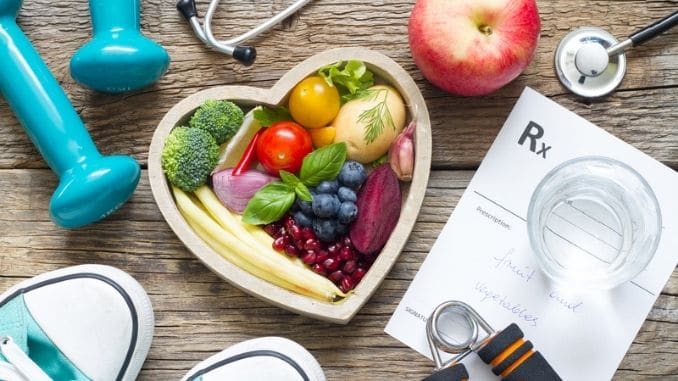
It’s important to note that in most cases, having high cholesterol is very treatable, so be sure to discuss any concerns you may have with your doctor. A simple blood test can quickly determine your current cholesterol levels, and an appropriate course of action can easily be recommended, depending on your results. Above all, the best advice is to make healthier lifestyle choices that include eating a well-balanced diet, staying active, avoiding smoking, and limiting your alcohol intake.
Being active is one of the best ways to keep yourself healthy and naturally lower your cholesterol level. Learn more here.

